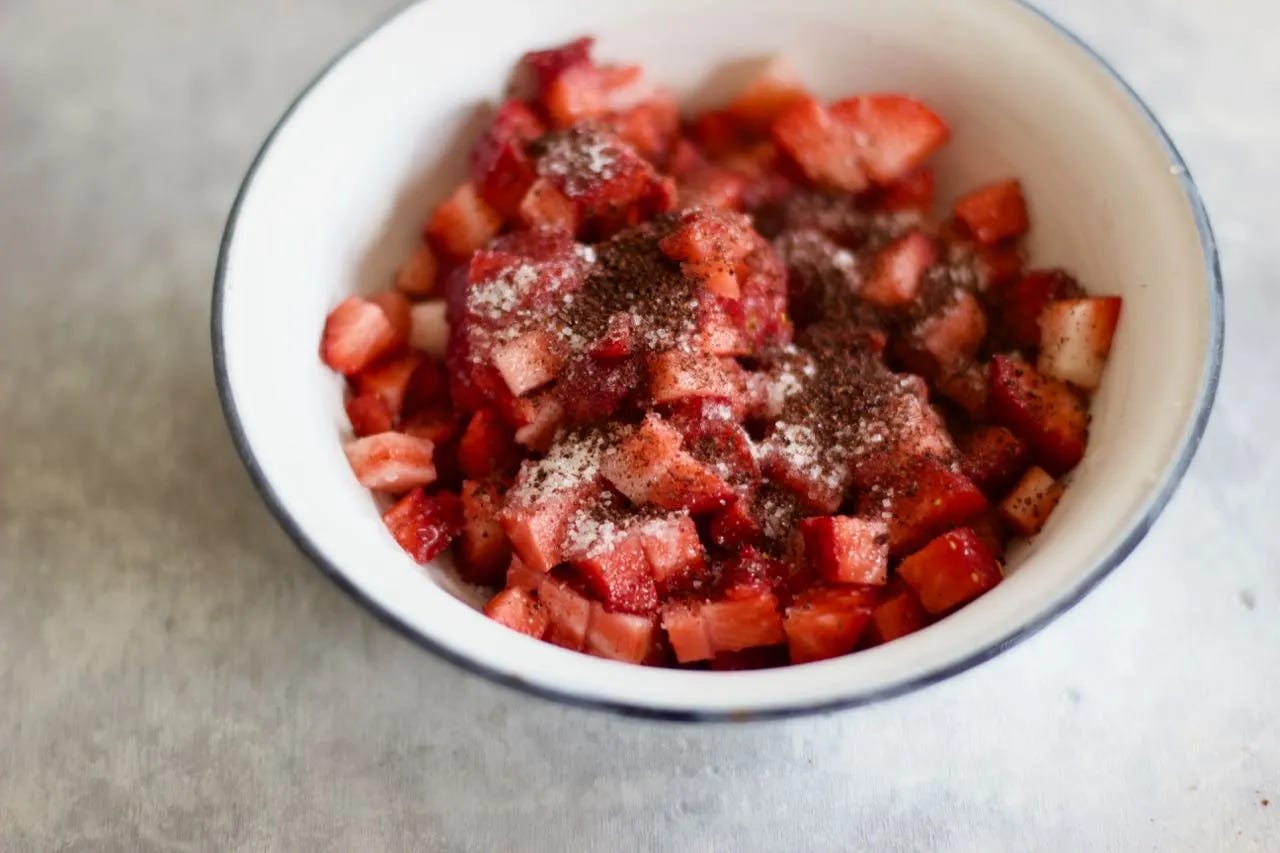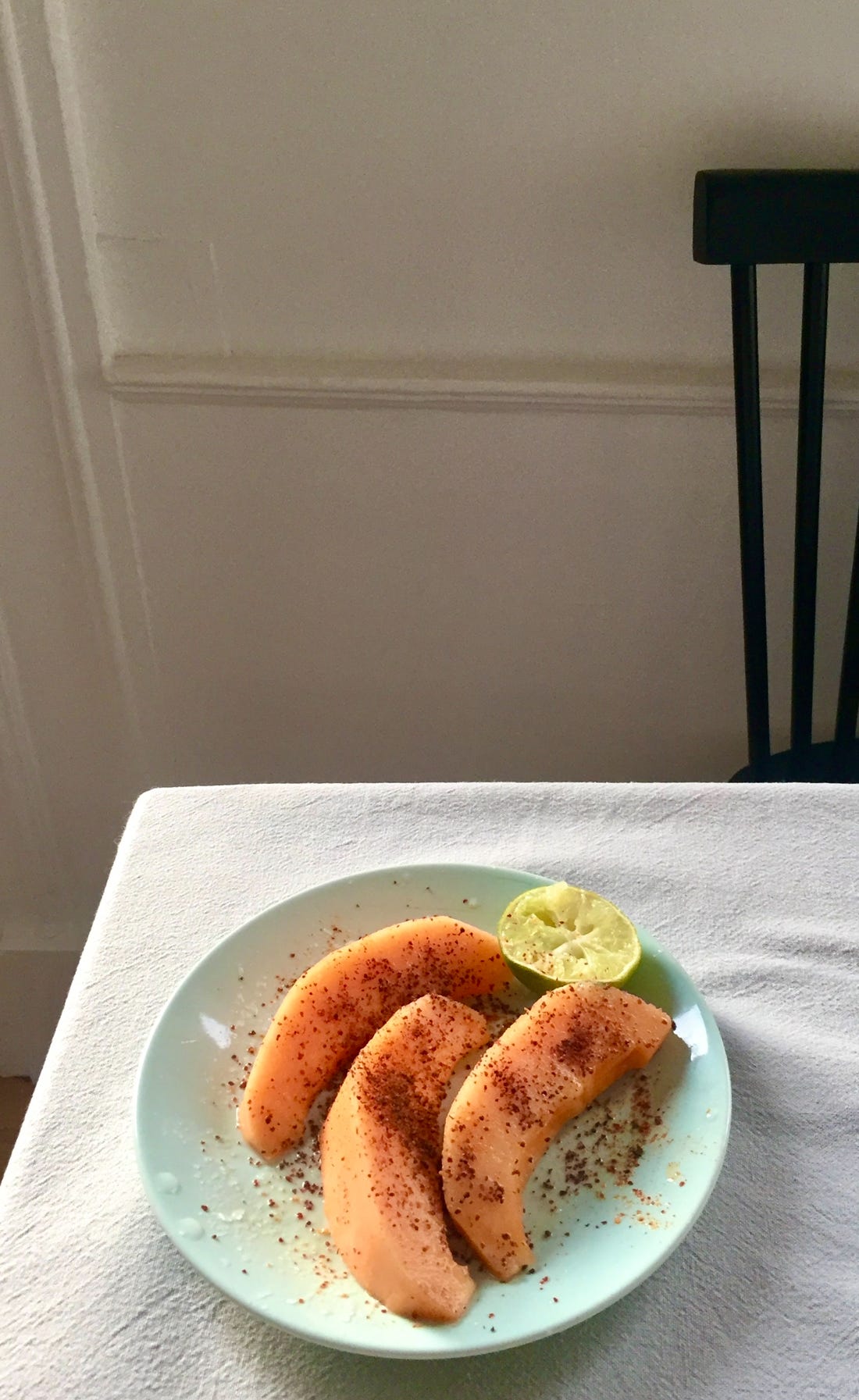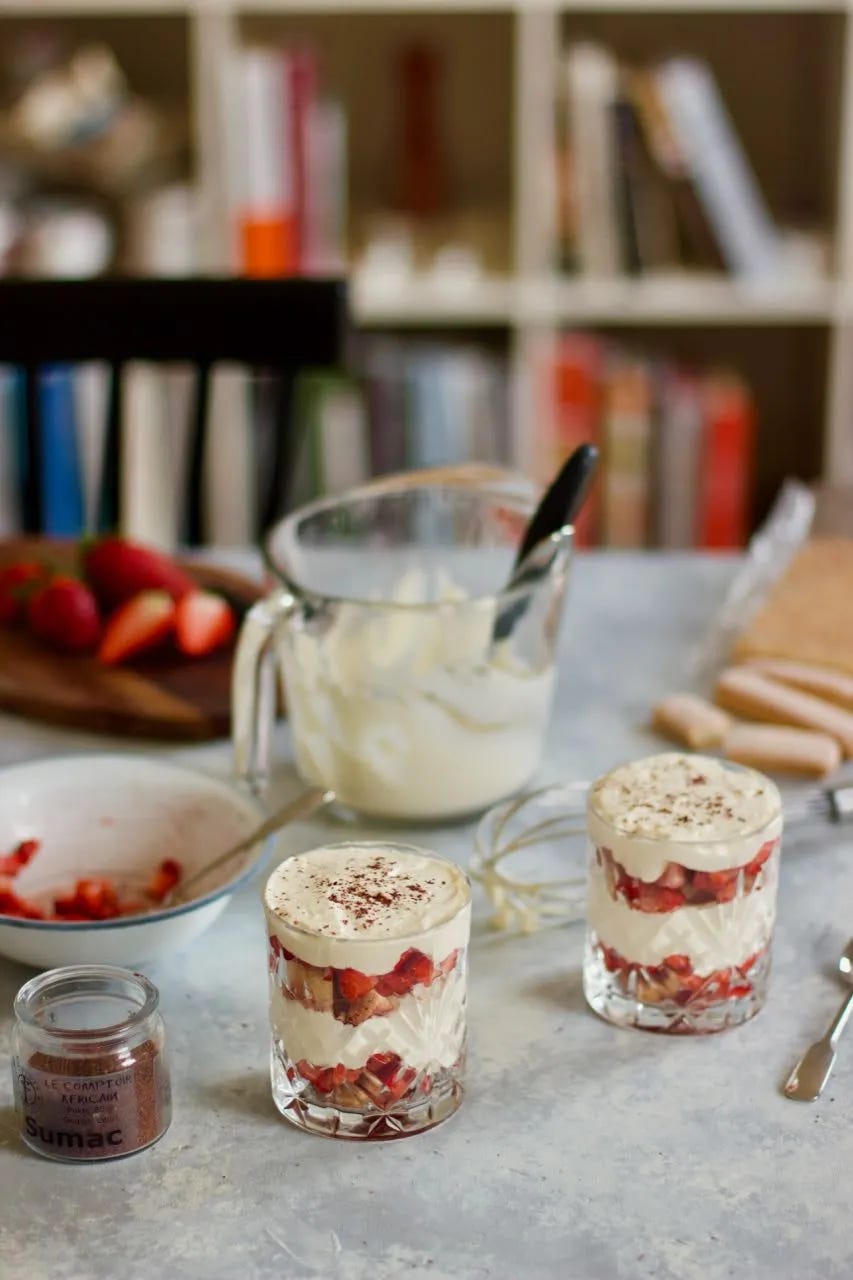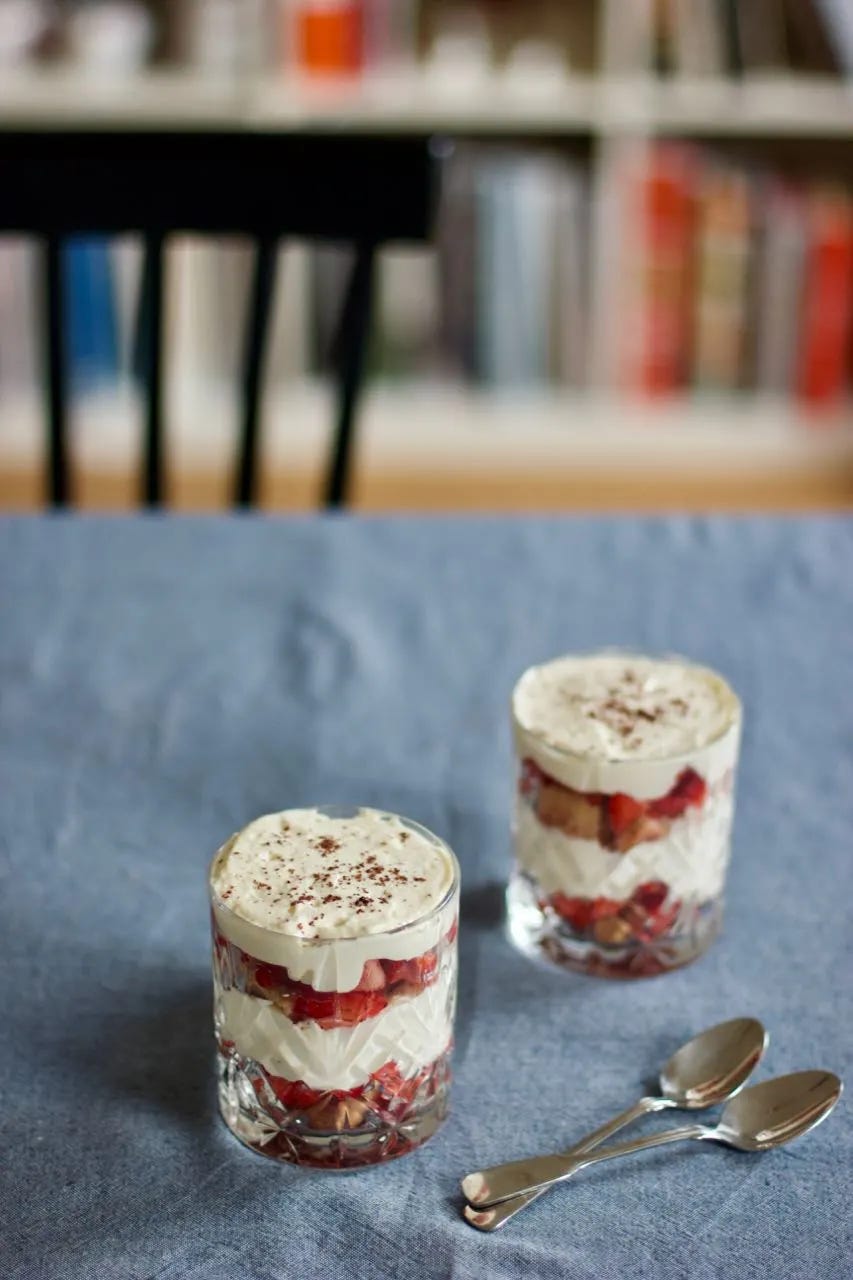“Almost all houses in the Lebanon would keep a stock of sumac. I have used it myself, ever since I discovered it some years ago, for it has a rounded fruity sourness … without the distinctiveness of vinegar or the brutality of tamarind or lemon”
Tom Stobart, Herbs, Spices and Flavourings
Hello, and welcome to Newsletter No 25 here on Substack! Thank you for stopping by. If you are already subscribed, thank you for supporting my work, it means the world to me! If not, grab a seat if you are interested in recipes as well as tips and tricks to make the most of our increasingly eclectic pantries and a good dose of my at times random musings about all things food - and make sure you hit that subscribe button if you don’t want to miss any future posts!
Today I want to talk about Sumac. And I will just put it out there: while Sumac is probably most familiar to many of us from Middle Eastern cooking (for example, the reddish pink specks garnishing crunchy, herby and zingy Lebanese Fattoush salad as well as the slight tang it lends to Za’atar) it is a great addition to any home baker’s pantry. In fact, as I said in my 2024 food trends Newsletter at the start of the year, I fully expect Sumac to be increasingly present in desserts and baked goods. And I will show you why! And if you haven’t already done so, the recipe ideas I will share will hopefully inspire you to start playing around with Sumac as well.
Balancing flavours is as important in baking and desserts as it is in cooking, and acid plays a crucial role when it comes to balancing flavours. Lemon juice or vinegar can cut through rich and fatty dishes, balance both sweetness and bitterness as well add bright, fresh notes and enhance the flavour of other ingredients. But sometimes you don’t necessarily want the extra moisture that lemon juice or vinegar bring to the equation. And that is where Sumac comes in. So let’s dive right in.
What is it?
Sumac’s name comes from the Arabic word ‘summaq’ (meaning red). It is typically sold as a coarse powder which is ground from the peppercorn sized berries (or, to be more precise, drupes) of Rhus coriaria, a shrub that grows across the Middle East and the Mediterranean.
What does it taste like?
Sumac tastes sour, there is no doubt about it. But its sourness is similar to that of green apple, fresh and fruity - unsurprising since its main flavour compound is malic acid (in addition to citric and tartaric acid), just like green apples. However, Sumac also has spicy, woody and earthy notes.
What does it go well with?
Sumac goes well with other spices that complement its fruity notes such as cardamom and vanilla. But it also pairs well with ginger which enhances its woody flavour. If you want to balance its sour notes, you can use sweet spices like allspice, anise, cinnamon, coriander, or nutmeg. Eleanor Ford in her new book Whispers of Cardamom also mentions rose water, orange blossom water, saffron and mint as possible flavour pairings.
When it comes to fruits, Sumac works well with sweet fruits and berries like strawberries, cherries and figs for example, but also tart fruits like pomegranates, lemon and grapefruit. And I am rather partial to sprinkling Sumac over segments of ripe orange-fleshed melons.
How can I use it?
One important thing to note first: for baking or preparing desserts with Sumac you want to make sure you are buying pure Sumac and not Sumac that has had salt added to it.
I like to think of Sumac as nature’s sherbet - mixed together with sugar it is the perfect thing to sprinkle over fruit, roll doughnuts, churros or cookies in like these Sumac Snickerdoodles from Rose Wilde. Speaking of cookies - I have also had my eyes on Susan Spungen’s Lemony Shortbread with a Sumac Glaze ever since she posted about it in the run-up to Christmas last year. (And Sumac really does make for the prettiest glaze, be it for cookies or a cake - a beautiful dusty rose mottled with specks of red!)
If you want to familiarize yourself with the flavour of Sumac before diving into other recipes, you could do worse than trying this Sumac lemonade or this Sumac and Saffron Refresher from Nik Sharma both of which I am bookmarking for this summer.
Sumac is also a great ingredient in cakes - like this Sumac Drizzle Cake I shared on my old blog a while ago and which, together with a simple cherry compote and a Mahleb flavoured whipped cream also makes for a rather delicious simple dessert. Personally, I have just put Benjamina Ebuehi’s Sumac, Spelt and Apple Cake on my list of things to try.
And you can of course try your hand at making ice cream and other frozen treats with Sumac - like this Mango-Sumac Yoghurt Semifreddo from Bon Appetit or Eleanor Ford’s Strawberry and Sansho Sorbet. And when it comes to dessert ideas, why not try this Strawberry and Rose Eton Mess from Ottolenghi or Ottolenghi’s Sumac-roasted Strawberries with Yoghurt Cream? In a similar vein, Eleanor Ford has a recipe for White Chocolate Pots with Sumac Soured Berries which I am planning to make for dessert for tomorrow night.
Aside from all these ideas (and the Sumac & Strawberry Tiramisu-ish, the recipe for which I share below), in theory you can try using Sumac in any cake or dessert that calls for lemon zest or lemon juice.
Have you made any desserts or baked with Sumac before? Tell me about it in the comments! Also, let me know if there are other ingredients you would love for me to feature in my Ingredients Spotlight series!
Strawberry & Sumac Tiramisu-ish
Notes: As non-traditional as the ingredient line-up might sound, the process for making this Tiramisu-ish will be familiar to anyone who has ever made Tiramisu. Yolks (with sugar) and whites get whipped separately and are used to lighten the cream part of the Tiramisu (here, labneh instead of Mascarpone cheese). And while lady fingers are normally soaked with coffee syrup, here the ladyfingers get the necessary moisture from the strawberries macerated with both sugar and sumac.
Serves 4
Ingredients
400g strawberries, hulled and diced
30g sugar
1 tsp sumac
50g sugar
2 eggs, separated
1 pinch of salt
500g Labneh*
1 sleeve of ladyfingers
*Labneh is a fresh cheese made from strained yoghurt. You can buy this ready made in many Middle Eastern supermarkets. However, it is easy to make yourself. Simply line a colander or sieve with a nutmilk bag or a clean muslin or kitchen towel, add some yoghurt and set it aside to strain for 6-8 hours or overnight. Use a yoghurt you really enjoy eating and ideally one with higher fat content (6 percent or more). How much yoghurt you will need to make 500g worth of Labneh will depend on how much whey your yoghurt has. To be on the safe side I would start with 1kg of yoghurt, any left over Labneh you can then use like yoghurt or turn it into a simple dip by spreading on a plate and topping with some olive oil and za’atar. Also, don’t throw away that whey – you can add it to your smoothies, pancake batter, bread doughs etc.
Directions
Start by mixing the strawberries with the sugar and sumac. Set aside.
To make the cream, whip the yolks with the sugar until tripled in volume. Whisk together with the labneh. Whisk the egg whites and the pinch of salt until stiff peaks. Add one third of the egg whites to the labneh and whisk to combine to loosen the labneh. Then carefully fold in the remainder of the egg whites, making sure the mixture doesn’t deflate too much.
Place a layer of ladyfingers on the bottom of your serving dish. Check your strawberries – if it looks like there is only maybe a couple of teaspoons worth of juice at the bottom of your dish, add an extra tablespoon of water. Spoon half of the strawberry mixture, including the juices, over the ladyfingers. Cover with half the labneh cream. Add a further layer of ladyfingers and top with the remaining strawberries. Cover with the remainder of the labneh cream. Place in the fridge to firm up for at least a couple of hours, ideally 4-5 hours so the labneh cream has time to set and the ladyfingers have time to soften from the strawberry juices.
To serve (and if you are feeling fancy), you can sprinkle some extra sumac over the final layer of labneh and decorate with a few more strawberries, e.g. a mix of whole, halved and quartered - but do this right before serving, otherwise the sumac will bleed its red colour into the labneh cream.
Best eaten on the day it is made, it will keep for 1-2 days but note that the strawberries will continue to soften over time.








One of my most used ingredients these days!
Lovely written piece.
I usually pelt some over fried eggs as well, quite nice! The lemonade is wonderful!